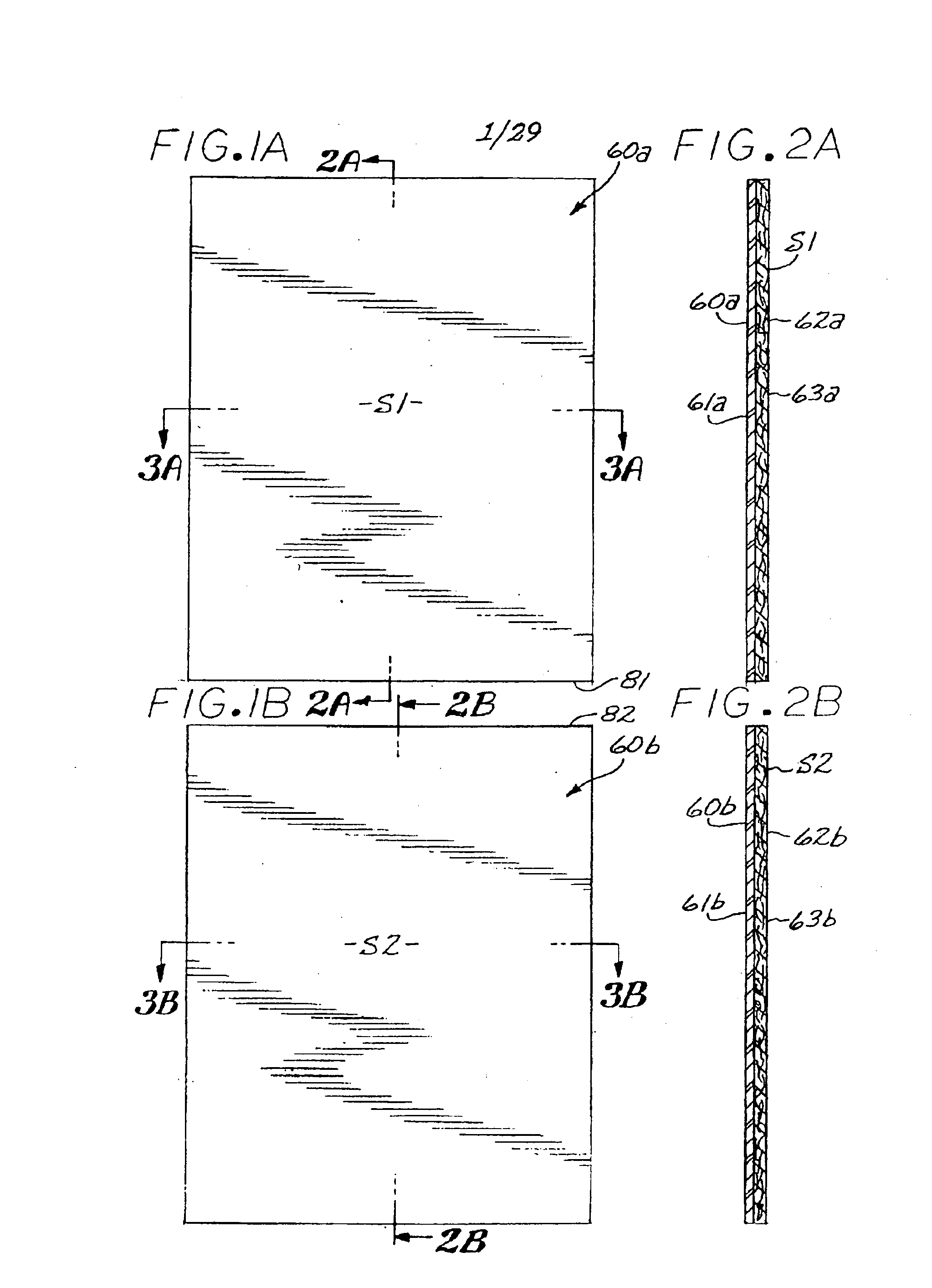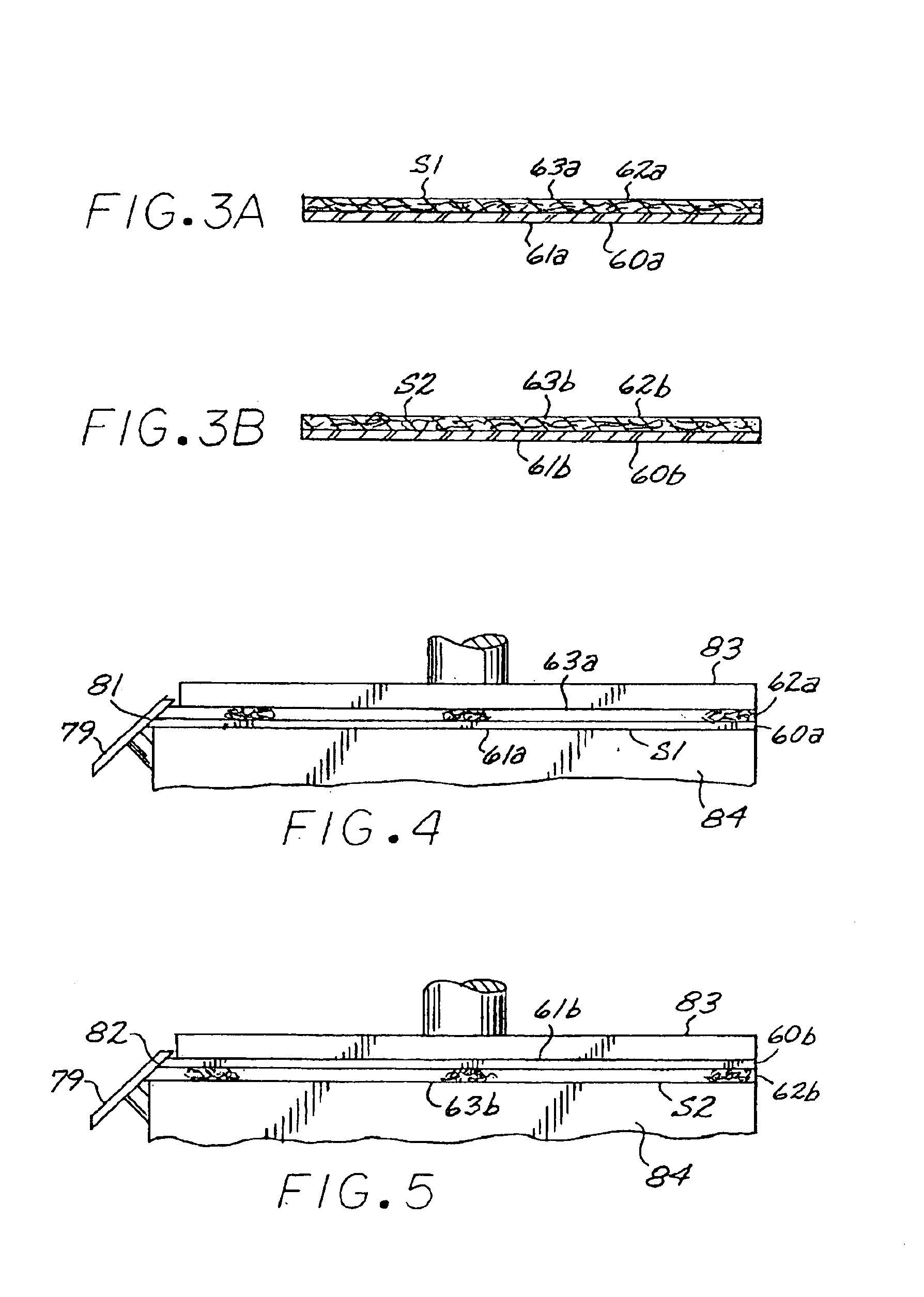Multi-segment single panel grip
a single panel, multi-segment technology, applied in the field of golf clubs, can solve the problems of difficult to accurately align the adjoining side edges of the strip, limited in its ability to accommodate multiple color schemes, labor-intensive fabrication, etc., and achieve the effect of ensuring the same resistance to shock
- Summary
- Abstract
- Description
- Claims
- Application Information
AI Technical Summary
Benefits of technology
Problems solved by technology
Method used
Image
Examples
Embodiment Construction
Referring to the drawings, in FIG. 81, a multi-segment single panel grip G embodying the present invention is shown attached to the shaft 55 of a golf club GC. In FIG. 82, a multi-segment single panel putter grip PG is shown attached to the shaft 57 of a putter P. Referring now to the remaining drawings, a preferred form of grip G includes a multi-segment single panel S formed of multiple panels of bonded-together layers of polyurethane 60 and a felt 62 which is then wrapped about and adhered to a resilient underlisting sleeve U of conventional construction. Throughout the application, the term top is used to refer to that which is closest to the butt end of the club opposite the club head, i.e. the end closest to the golfer if that golfer were to be swinging or stroking the club. Similarly, the term bottom is used to define the panel or edge furthest from the butt end of the club.
FIG. 1A shows a first two-layer panel S1 with an outside layer 60a and an inside layer 62a (FIG. 2A). F...
PUM
| Property | Measurement | Unit |
|---|---|---|
| Angle | aaaaa | aaaaa |
| Friction | aaaaa | aaaaa |
| Tackiness | aaaaa | aaaaa |
Abstract
Description
Claims
Application Information
 Login to View More
Login to View More - R&D
- Intellectual Property
- Life Sciences
- Materials
- Tech Scout
- Unparalleled Data Quality
- Higher Quality Content
- 60% Fewer Hallucinations
Browse by: Latest US Patents, China's latest patents, Technical Efficacy Thesaurus, Application Domain, Technology Topic, Popular Technical Reports.
© 2025 PatSnap. All rights reserved.Legal|Privacy policy|Modern Slavery Act Transparency Statement|Sitemap|About US| Contact US: help@patsnap.com



